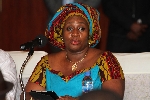Ghana government redefines 'Tax Fraud'
 Bright Simmons
Bright Simmons
Two days ago, I received courtesy of friends in the Ghanaian media, one of the strangest pieces of political communication I have seen since I started paying attention to public affairs.
The strange object was a one-page statement of the Ministry of Communications’ view of the value generated by the KelniGVG contract since it was signed in 2017. You remember that fight, right?
As everyone who follows this page knows, I was a very vocal critic of the KelniGVG contract from its sad inception to its unfortunate implementation. My position then was, and remains, that not only is the entire Common Monitoring Platform (CMP) which the agreement is meant to execute uselessly, it is fundamentally illogical.
The simplest way to describe the CMP’s logic is to use an analogy. Supposed the Government of Ghana suspects that Unilever or Nestle is cheating on excise duties. Would the appropriate measure be to implement cameras on Unilever’s production lines to count excisable goods in order to establish an independent record of production volumes as a way of gauging revenues, and by implication pass-through duties?
The answer, of course, is that this would be absurd. Pricing, discounts, returns, inventory levels, receivables, expenses, and a myriad of other factors obfuscate any serious link between production volumes and revenues.
Moreover, superior methods like bank account ledger scrutiny, forensic auditing, unannounced visits to examine financial software and other records, and various such measures exist for tax fraud control.
The case against the CMP is virtually identical. Independent monitoring of mere transaction volumes is a very poor substitute for tax auditing, and as a complementary process, it remains wholly redundant and distractive. Especially, when the government is also being charged $178 million over ten years for this hopeless exercise.
Even if one seriously needs a complementary tool to backstop the main strategy, some of us have shown how with less than $100,000 such a solution can be designed to test for fraud in the data freely submitted by the telecom companies using random sampling techniques.
Being a true critic requires the humility to learn from hindsight, and contrary to perceptions about social critics in Ghanaian civil society, many of us who wear this hat very often hope that we might be proved wrong.
So, my curiosity upon learning that the Minister of Communications will finally account for the results of the huge expenditure she has imposed on the state through her championing of such a controversial project knew no bounds.
Imagine my horror then when I saw the one-page press release announcing massive benefits supposedly derived from the CMP with nary a shred of evidence to back the claim.
More frighteningly, the Minister casually accuses the licensed telecom companies of having cheated the country out of $85 million over the course of the three years prior to the launch of the CMP, here again without a single iota of evidence.
Mark her words:
The introduction of the CP has uncovered that, prior to the introduction of the CP, GHS 300 million in taxes was lost from potential under-declarations between 2015 to Q1 of 2017. An estimated GHS 470 million in taxes was saved between Q1 of 2017 to date as a result of the announcement of the implementation of the CP on March 8th, 2017 and its actual implementation to date. There would have been a potential loss of a total of GHS 1.5 billion through to the end of the CP contract, had the CP not been implemented.
No telecom company is named in this allegation of massive tax fraud. No methodology has been provided as to how these tax under-declarations were measured. Nothing. And, to crown it all, not a single hint of pending prosecutions for entities and individuals who have been so emphatically accused of stealing $85 million from Ghana.
Even more bizarrely, not a single telecom executive has been asked any questions by the Ministry to understand why they were on course to cheating Ghana out of a whopping $250 million by March 2027. This is a lot of money to “steal” from a country as strapped for cash as Ghana.
Recall that this is an amount nearly 3x what the State is likely to obtain from its ongoing tussle with Woyome. Yet, a Minister of State has levelled a more damning allegation against corporate citizens of this country and not a single announcement has been made that the relevant authorities plan to institute civil action in the Ghanaian courts to retrieve these proceeds of tax fraud that have allegedly gone to enrich private business people. I am lost for words.
KelniGVG was for me the biggest dent in any confidence I had that the new Administration upon taking over from the previous administration intended to do anything different in the public contracting and “value for money” arena.
The evidence I saw of pure and barely disguised procurement rigging seriously traumatised me.
The recent performance of the Minister of Communications has succeeded in prying open old wounds. The casualness exhibited so far in dealing with the very critical matter of showing value for money in a contract costing this country nearly $200 million when all is said and done has deepened my trauma.
Luckily, the Minister’s statements can be subjected to a measure of independent verification. Not only has she not provided evidence that the CMP has blocked tax fraud of $85 million from recurring due to the heightened vigilance but the available evidence in fact also shows that nothing of that sort could have happened.
Commenting on the underwhelming performance of revenue mobilisation in the first three quarters of 2019 (January to September), the Finance Minister in his budget statement to Parliament had this to say in paragraph 125:
Lastly, taxes on Goods and Services were impacted mainly by shortfalls in Excise Duty and to lesser extents, Domestic VAT and Communications Service Tax (CST).
Recall that the primary tax evasion fears that drove the ramrodding of the CMP project through were related to CST. It was to measure CST proceeds that the CMP was proposed and justified. All the talk about mobile money transactions in the Minister’s strange press statement were diversionary since the CMP has nothing to do with phantom mobile money tax measurements. The Minister of Finance, who should know more about revenue performance metrics, has openly admitted CST revenue underperformance and the records are available for all to check.
So, what were these “shortfalls” in CST collection that the Finance Minister was talking about?
The committed enquirer needs to dig deep into successive budgets for the period under consideration to make headway in understanding the Finance Minister’s concerns.
Let’s start with paragraph 118 in the current budget where we are told that:
These fiscal measures [to address ongoing revenue shortfall challenges] included the upward adjustment in the Communication Service Tax (CST) rate from 6 per cent to 9 per cent…
That means that in comparing 2018 – 2019 CST proceeds to what prevailed before the March 2017 commencement of CMP activity, we need to discount proceeds from Q3 2019 by as much as 50%, else we will not be comparing apples to apples.
Next, we need to examine the raw numbers.
In the first full year following the implementation of the CMP, CST proceeds were 420 million GHS.
In view of the extensive delays following the launch of the CMP and the long lull before actual implementation, it is fair to assume that whatever impact it must have had would have been felt beginning from 2018. And indeed there was a climb from the year-end estimate of 343 million GHS in 2017 to 420 million GHS by year-end 2018. This is indeed more than 20% growth in proceeds.
From the current provisional returns of 292 million GHS in CST revenue from Q1 to Q3 witnessed in 2019 (the serious “underperformance” hinted at by the Finance Minister), it is safe to say that it would be a miracle for CST revenues to outperform the 423 million GHS originally projected in the budget.
But even if one allows the 503 million GHS projection that is riding on the 50% increase in rates, the growth rate would still be 20% year on year. Taking the 50% increase in the rate into account and applying a suitable discount formula would show an actual growth rate of less than 12.5%. The composite growth rate for CST proceeds since the CMP was introduced is thus about 16%, roughly, most of it attributed to a growth in rates.
In short, assuming that there has been no real growth whatsoever in the amount of money Ghanaians are spending on communications, and that all growth in taxes is thus due to the CMP, would yield only 160 million GHS (optimistic) in increased revenue, which brings us to “potential underdeclarations”, or to discard the euphemism, potential tax fraud of $29 million on the part of the telcos uncovered by the CMP, a far cry from the $85 million being alleged.
But we all know that such crude analysis would amount to patent nonsense.
The telecom industry reports its revenue growth, and industry analysts take note. MTN alone has been recording on average above 20% topline revenue growth, and whilst the others are not as profitable as MTN (in fact, some of them barely make any profits), that is due more to the cost of doing business than it is to topline performance.
The best way to make the point I am pressing is simply to present the Ministry of Finance’s own projections for CST revenue growth:
Ghana_CMP_Projections_2020_2023
The growth of CST revenue from circa 340 Million GHS in 2017 (before the CMP became fully operational) to the estimated level of about 440 Million GHS through 2020 can be explained completely and without any handwringing by two factors: the 50% increase in the CST rate from 6% to 9% and the ongoing growth in consumption of telecom services by the Ghanaian population which analysts believe shall continue to orbit the 9% compound annual growth rate despite a slowdown in subscriber growth.
In fact, by some measures, the growth in CST revenue is somewhat below the long-term trendline, but by every measure, it is completely static. The CMP introduction has had no discernible statistical effect whatsoever.
In any serious country, one would have expected Parliament to bring the Minister before the relevant committees to explain all these strange discrepancies and confusions emanating from her statement, and also to tell the whole nation why she is making allegations of massive tax fraud against companies without a single shred of evidence or inclination to seek justice for the nation. And all this from a position of such extreme privilege.
Source: Bright Simmons
Trending News

‘I can only thank you for your dumsor patience’ – Akufo-Addo to Ghanaians
14:50
Ashanti NDC condemns renaming of Ameri Power Plant
16:55
Ignore false NPP propaganda; I’ve never benefited from government scholarship - Joyce Bawah insists
18:25
Digitalisation has cut demand for sex from women for public services – Bawumia
11:17
Farouk Aliu Mahama embarks on ‘Thank You Tour’ in Yendi
16:06
Tema Manhean: Two dead in clash between youth and Navy
16:04
Accra wraps up successful year as 2023 World Book Capital; prepares to handover title to Strasbourg
10:54
Ex-CEO of MASLOC sentenced to 10 years in prison with hard labour
15:28
Ejisu: Kwabena Boateng elected NPP Parliamentary candidate
15:52
Scores of Kumasi residents demonstrate over dumsor
10:49



